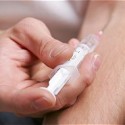One in five men at risk of drinking problem
At least one in five men in developed countries are at risk of abusing or becoming dependent on alcohol during their lifetimes, U.S. researchers said on Sunday.
The risk is about half that for women, who have an 8 to 10 percent chance of becoming dependent on alcohol.
And despite the popular belief that nothing works, there is help in the form of several effective treatments, they said.
“This is a serious problem,” Dr. Marc Schuckit of the Veterans Affairs San Diego Healthcare System and the University of California said in a telephone interview.
He said men have roughly a 15 percent lifetime risk for alcohol abuse, and a 10 percent risk for alcohol dependence.
“Once you carry one of these diagnoses regularly, you tend to cut your life short by 10 to 15 years,” he said.
His findings, published in the journal Lancet, are meant to guide doctors on how to spot and treat their patients for alcohol dependence disorder.
This includes a range of problem drinking behaviors such as spending too much time drinking, having trouble stopping once started, skipping important life events to drink or recover from a binge, and setting and exceeding a self-imposed limit on the number of drinks a person plans to consume.
The definition also includes more classic signs of alcohol addiction such as withdrawal.
They said repeated heavy drinking increases the risk of a temporary bout of depression by 40 percent. And 80 percent of people who are dependent on alcohol are regular smokers.
Some 40 to 60 percent of the risk of problem drinking can be explained by genes, and the rest by environmental factors, Schuckit said.
That may explain why women have a lower lifetime risk.
“This is a cultural issue. More women than men are lifelong abstainers. A higher proportion of women than men never open themselves to the possibility of alcoholism because they never or very rarely drink,” Schuckit said.
He said heavy drinking raises the risk of heart disease and cancer, even in those who do not smoke.
And despite perceptions that treatments do not work, he said most patients with alcohol use disorders do well after treatment.
About 50 to 60 percent of men and women with alcohol dependence abstain or show substantial improvement in a year after treatment, which can include drugs such as Forest Laboratories Inc’s Campral or acamprosate, naltrexone, also known as Revia and Depade, and disulfiramacamprosate or Antabuse.
Schuckit said these should be used in combination with therapy aimed at helping people change their behaviors.
source: Reuters
